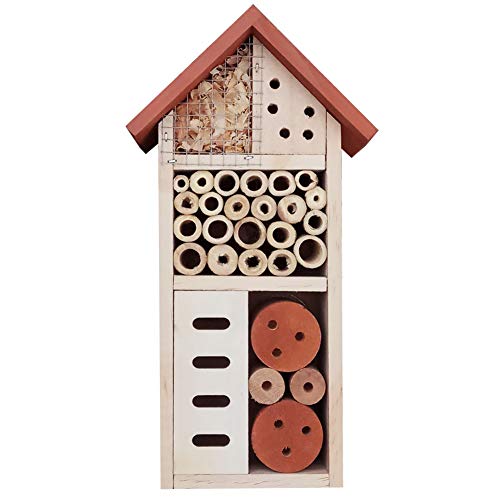The balcony gardens at this year's Chelsea Flower Show showcased a new wave of possibilities for urban spaces – here are the key trends I spotted
What Chelsea Flower Show 2025 balconies tell us - the aesthetic and ecological shifts driving the new garden frontier
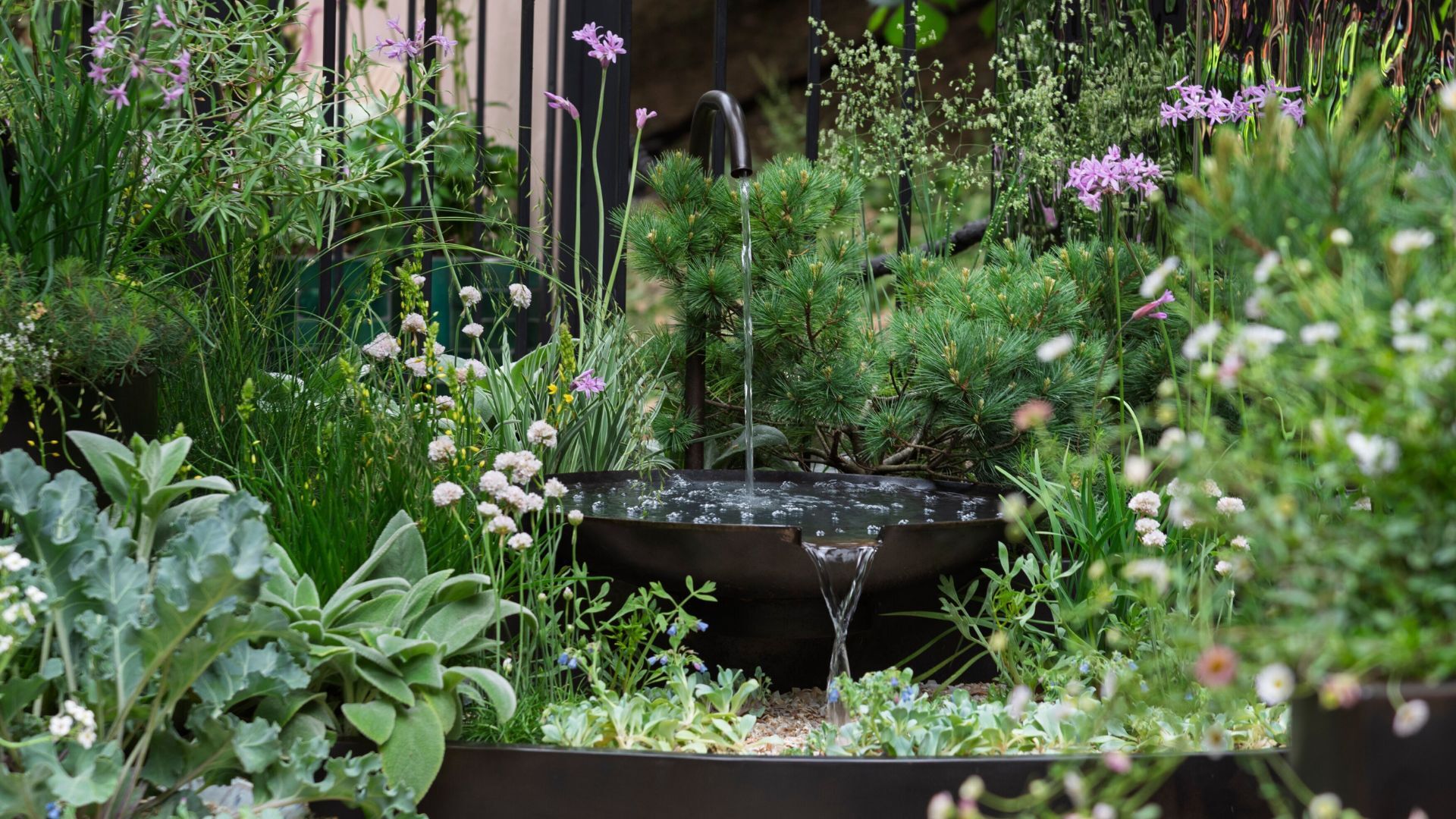

If you are on the hunt for balcony garden ideas, then this year’s RHS Chelsea Flower Show was the place to be - there was inspiration in abundance.
A plethora of gardening trends were on display this year. The cottage garden theme seemed to dominate the aesthetic narrative across the show gardens; however, head over to the Chelsea Flower Show 2025 balcony gardens, and something distinctly different was on display.
I spotted some of the familiar best balcony plants, and some unanticipated, seemingly unlikely plants, too. With such little space to work with, every minute detail was expertly considered and calculated to maximise the potential of the square footage available. The limited space available certainly has its drawbacks, and you might think it an almighty hindrance for the garden designers. After studying the balcony gardens at this year’s show, though, I was struck rather more by its possibilities than its limitations.
6 emerging balcony garden trends from this year's RHS Chelsea Flower Show
Planting for wellness seems to be the overriding theme amongst all the Chelsea Flower Show 2025 balcony gardens, and I spotted some emerging new trends for balcony gardens that soothe, rejuvenate, restore, and in some cases, rewild us, even in an urban setting. Here, I’ll shine a light on the trends forecast to change the way we think about our balcony gardens.
1. Planting for a rapidly changing climate

'C6' Sponsor: Navium Marine Ltd Designer: Joshua Fenton Contractor: Fenton Gardens Ltd
Gone are the days when the seasonal variations in weather were fairly consistent. Now, the extreme weather gardeners face is becoming more apparent, and gardening is more challenging as a result.
As such, a recurring theme across several of this year’s balcony gardens at RHS Chelsea was the intentional implementation of resilient planting designs that can cope with the intensifying climatic extremes.
Drought-tolerant planting could be seen across almost all of the balcony gardens, and there was strategic use of plants that cool walls and microclimates, like Jasmine, English Ivy, and Virginia Creeper.
Design expertise in your inbox – from inspiring decorating ideas and beautiful celebrity homes to practical gardening advice and shopping round-ups.
As well as planting with the climate in mind, the C6 Garden, designed by Joshua Fenton, took things even further, and the design was focused on carbon sequestration, being able to sequester over 1200kg of carbon, as well as water recycling, achieved by slowing down and storing 450L of rainwater.
The idea is that the garden can offset one’s carbon footprint, and despite this sounding like a strictly utilitarian garden, in which function has been prioritised over form, the design itself is resoundingly pretty and perhaps the most romantic of all of the balconies this year. Proof that in this time of climate variability, an outdoor space can thrill just as much as it functions.
2. Fill, thrill, spill

If you want to keep things beautiful, simple, and uncluttered, with large, well-structured pots, then the ME&EM City garden was the perfect source of inspiration. It was a pared-back, sophisticated city balcony garden without fuss or ostentation.
Some Chelsea staples, like Heuchera, Astrantia, and Salvia, make it very easy on the eye, particularly as they, and several other balcony gardens, follow the fill, thrill, and spill rule that many of us use when filling planters.
Essentially, you want to pick three plants: a thriller, a filler, and a spiller. The 'thriller' is the protagonist here, and should bring all the drama. It can be tall, colorful, and take center stage. The 'filler' offers a supporting role and fills up the mid-level space. The 'spiller' should trail over the sides of the container - a whimsical, romantic, cascading element.
This trend was apparent across many show gardens and is certainly one to take heed of if you are designing a balcony garden, or generally on the lookout for small garden ideas.
3. Incorporating water in the design
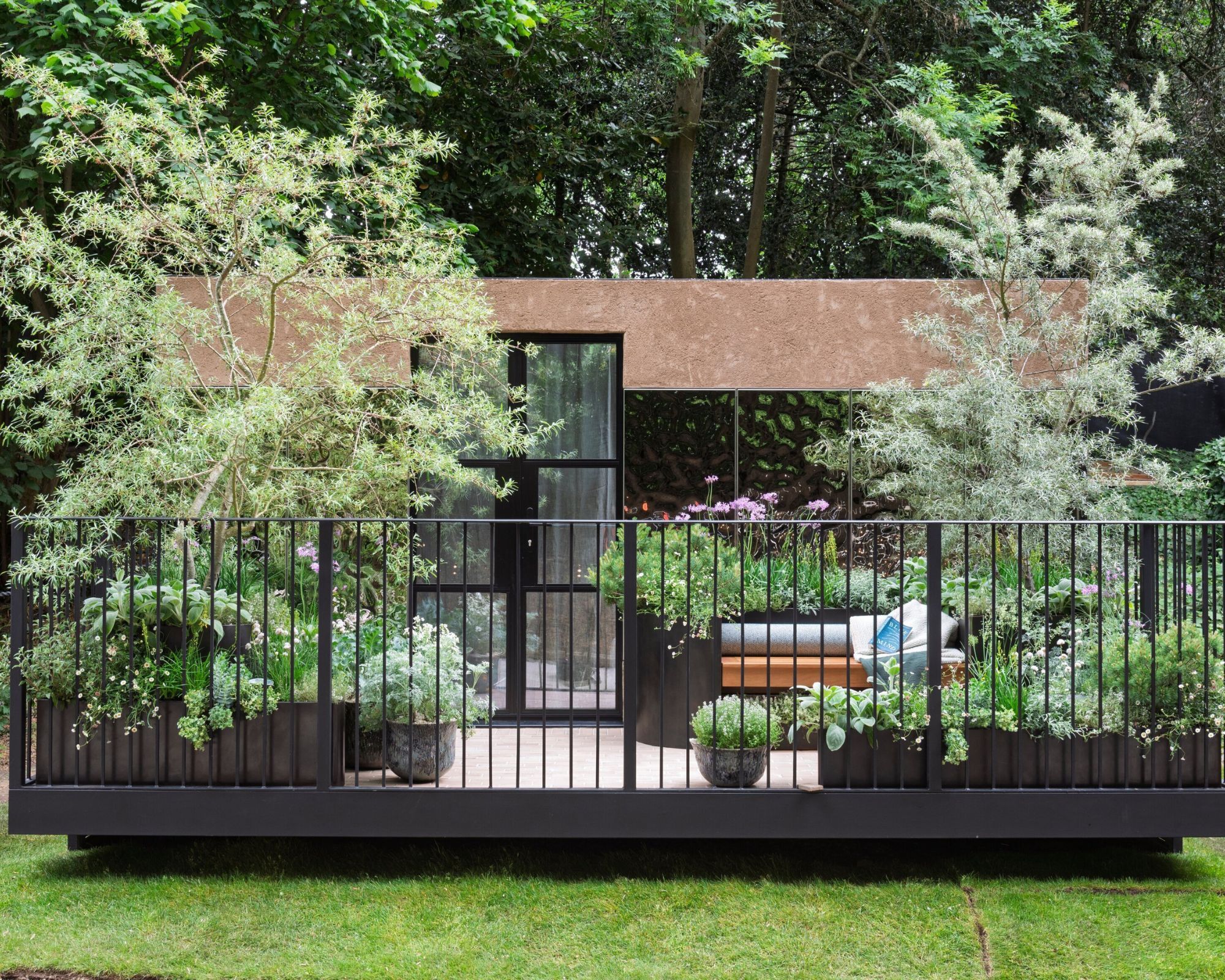
Navium Marine: Blue Mind Garden Sponsor: Navium Marine Designers: Ashleigh Aylett Contractor: Hortus London
Including at least one water garden idea is one of my non-negotiables in a garden. This rule still applies in the tiniest of outdoor spaces. Since wellness is the overarching theme this year, it comes as no surprise that water was used in many of the balcony gardens, since water is so beneficial to our overall well-being.
The Navium Marine: Blue Life Garden explored our deep connection to water as humans and the positive impact it has on our wellbeing. A truly beautiful part of the garden, and certainly one to copy if you’re looking for small balcony ideas, is the ripple-effect cladding at the back, which mimics the flow of water. Its effect is instantly soothing, grounding, and nurturing.
If you think water features are reserved for large gardens and grand sweeping terraces, it looks as though the tide might be turning on using water above ground level. Of course, using a water feature with a pump built in is paramount, but with many now made with fiberglass or polyresin, and designed to look patinated and antiqued, making your little oasis in the sky is entirely possible.
4. Wildlife gardening
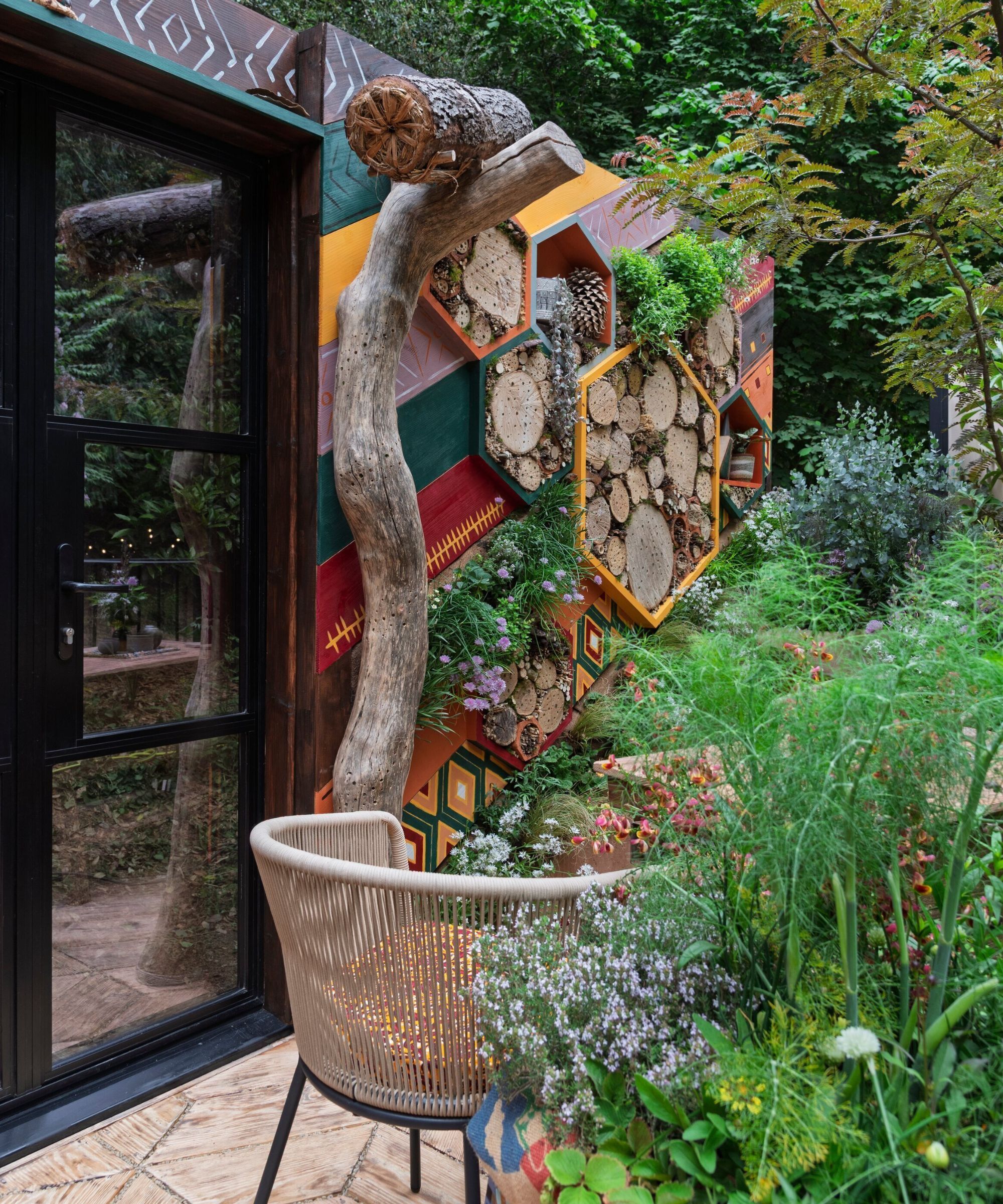
Bees for Development - Making Life Better With Bees Sponsor: Bees for Development Designers: Jenny Rafferty, Frantisek Zika, Jim Goodman Contractor: EH Thorne Ltd
Planting a garden for pollinators is a joyous and wonderfully rewarding thing. Butterflies, moths, bees, and hoverflies all need sources of nectar and pollen to thrive, so choosing particular plants for pollinators is the key to laying out a feast for them.
This can all take place in a limited space, as proven by the Making Life Better with Bees garden, which featured several incredible bee habitats, including traditional English and African beehives, and even took the theme so far as to use planters repurposed from honey barrels and beehives.
The plants used in this garden, such as Agapanthus, Chives, and Kniphofia (known as red hot poker), all attract pollinators to the garden. The trend for focusing on wildlife and pollinators, as if designing it with them in mind first and foremost, was very apparent this year.
Successively plant pollinator-friendly flowers to ensure there's a constant supply of pollen and nectar for bees and other pollinators, and include plants and features that support bees and biodiversity, such as Achillia, Echinops, or Sedums. To draw inspiration from this bee-friendly garden, you might want to make a bug hotel, provide water sources, and, if you're inclined to tolerate it, leave areas of the garden unmown.
5. Strike the perfect balance with your planting
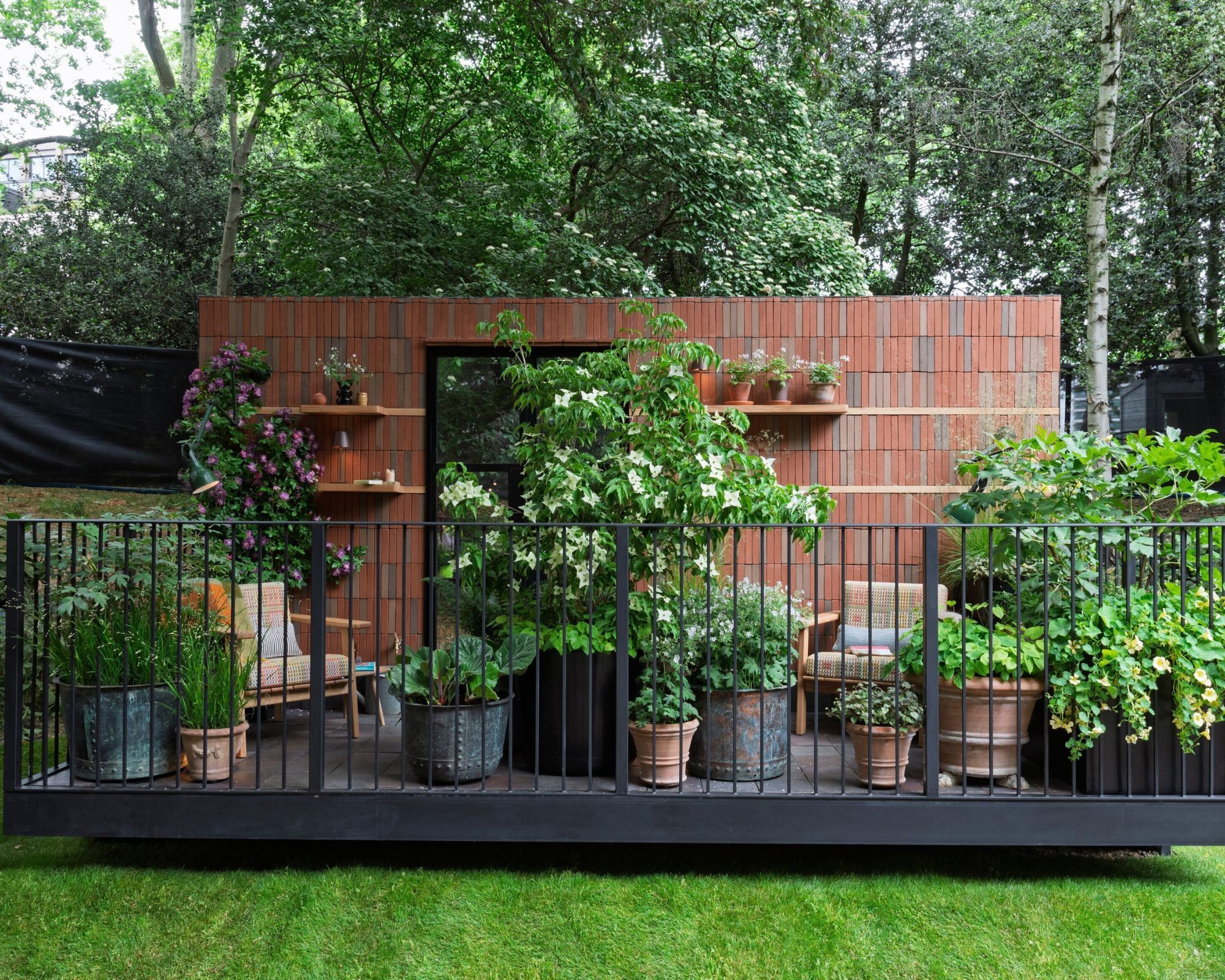
A Space to Read Balcony Garden sponsored by Viking Designer: Freddie Strickland and Ben Gifford
To my mind, one of the prettiest balcony gardens at this year’s show was the A Space to Read Balcony Garden sponsored by Viking. The plants chosen to feature in this garden were expertly selected, and anyone planning a balcony garden can take inspiration from this simple, yet effective method of plant selection.
The skill lies in choosing plants with long flowering periods for a long season of interest, and I spotted several of the longest-flowering perennials in the balcony gardens for this very reason.
The tricky thing about container gardening on a balcony is that you cannot easily swap out plants seasonally. With this in mind, perennial, long-flowering plants are the best bet.
A Space to Read Balcony Garden used Geranium sylvaticum 'Album' for example, which the designers Freddie Strickland and Ben Gifford said they chose for this precise reason, and its long flowering time makes for a perfect balcony plant.
Cornus Kausa ‘Milky Way’ was another plant I saw several times across several show gardens, including this one. It is an ideal plant for a balcony because it flowers in spring and summer, bears fruit later on in the year, and then provides good winter structure.
All this is not to say that annual flowers, with their short but sweet burst of color, should be exempt.
In the ME&EM City Garden, I was delighted to see sweet peas. Despite being annuals, they’re 'cut and come again', so they flower superbly throughout the summer months, as you keep cutting them to take indoors in jars or vases. The designers chose the older grandiflora varieties, which provide a heavenly scent unlike anything else.
It is this combination of selecting your mainstay plants that provide year-round interest or form, and shorter-lived but thrilling plants, that makes for a layered, interesting, and ever-changing balcony garden.
6. If there is limited space, go up
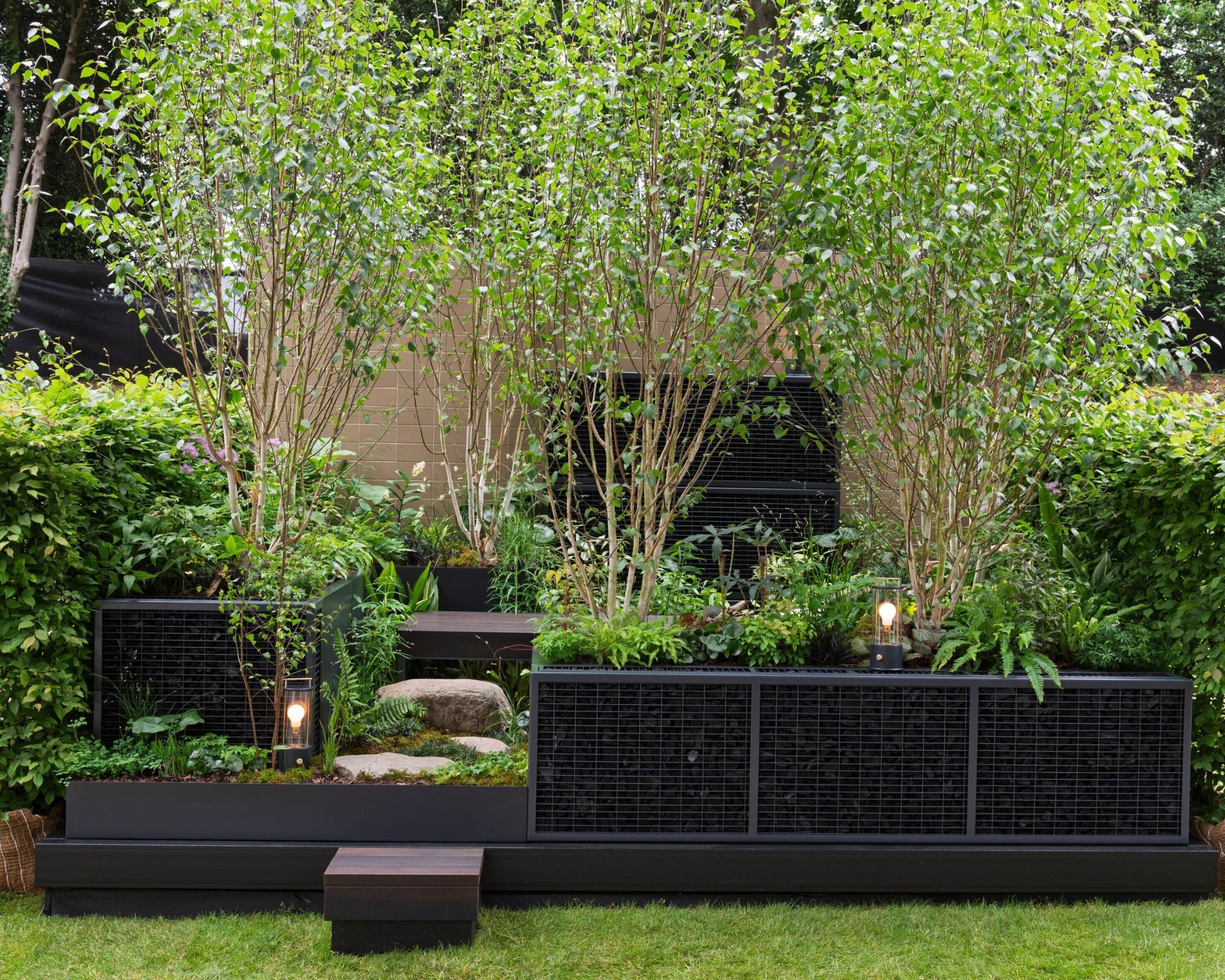
Komorebi Garden: Sponsor: Hamptons Designer: Masa Taniguchi Contractor: Garden Club London
Komorebi is the Japanese word for that beautiful dappled sunlight that comes through the leaves of trees. Experiencing this light in the forests in Nagano in Japan, the designer wondered if the same beauty could be experienced from the most unlikely of garden spaces - a balcony.
The Komorebi garden is a great example of pushing the boundaries and presumptions about balcony and container gardens, and totally shifting the perception of size and scale of the space.
One of the recurring themes at RHS Chelsea this year was, if you can’t go out, go up. This is a useful maxim; if the diameter of the space you have is working against you, consider planting upwards, as opposed to outwards, should the sky, quite literally, be your limit.
The trend for planting trees on balconies is going nowhere and has reshaped our view of balcony gardens altogether. What perhaps once was a space reserved for a small window box of petunias can now be a whole garden, an oasis, and a sanctuary away from the prying eyes of the public.
Playing with scale in this way can have a powerful effect. There are some excellent trees for small gardens worth considering, and these silver birch trees (Betula pendula) are perfectly suited to this area, particularly as they don’t block out too much sunlight.
The RHS Chelsea Flower Show 2025 balcony gardens remind us that great design needs neither grandeur nor ground, and limited space isn't a boundary, it's a brief. To discover more inspiration from the show, see our guide to the Chelsea Flower Show 2025 houseplant trends.

Sophia Pouget de St Victor is the UK Content Editor at Homes & Gardens, bringing readers the latest trends, expert insights, and timeless design inspiration tailored to a UK audience. With a background in luxury interiors and a qualification in Garden Design from London, she has a passion for creating spaces with character and emotional depth. Sophia gravitates toward interiors that defy definition, valuing individuality and effortless elegance. She lives in West London with her partner, two mischievous terriers, and a plump cat named Lettuce.


